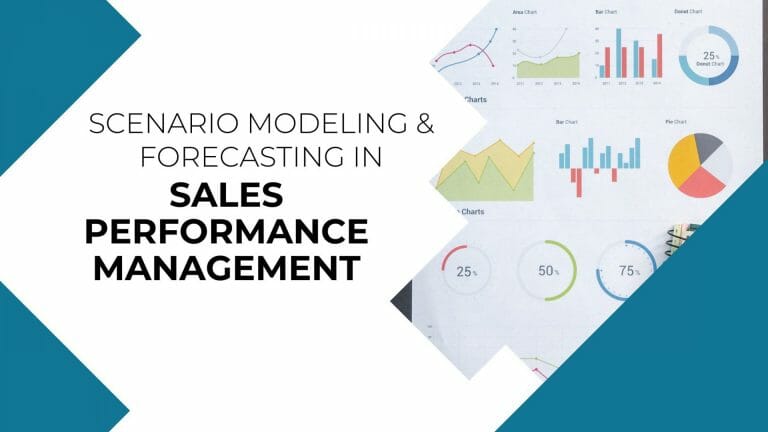In the world of Sales Performance Management (SPM), maximizing returns on sales investment in the form of optimal business performance is the primary success criteria. To this end, the underlying concepts of smart sales performance management have steered companies to align employee behavior with overall business goals through the effective use of well-designed, relevant compensation programs.
Table of Contents
Sales model complexity
Once upon a time, sales models were simple. Sellers earned straight commission based the revenue amounts. But times changed and so did business models. Globalization expanded opportunities for businesses to reach all corners of the world and rapid technological advancements supported the lofty goals of organizations across the globe. Simple business models turned increasingly complex and sales model complexity followed. Lines of business increased. Channels moved from a direct approach to including indirect and hybrid approaches. Many organizations started launching new products frequently as a result of accelerated innovation or strategic M&A. And so, companies switched from straight commissions to adding layers of intricacy in compensation programs. Incentive compensation evolved to include concepts such as thresholds, kickers, overlays, clawbacks and a myriad of other glossary terms that sellers had to rapidly understand and adopt as a part of life in the sales department.
But time never stops. Sellers quickly realized that globalization and technological advancement was a double-edged sword. On the one hand, they faced increased competition and greater pressures when selling products. On the other hand, the same competitive landscape gave rise to a much broader opportunity to earn more pay. In a quest to attract and retain top talent, companies increasingly leveraged compensation as a key differentiator. As compensation models focused on pay-for-performance programs, sellers with a proven track record of achieving targets found a greater number of options for higher pay.
With increasing competition around talent, leading companies realized that to attract and retain top talent, compensation programs need to be competitive as well as relevant. Variable incentives took on new meaning with both cash and non-cash rewards. Short-term contests and incentive programs with bonuses offered only at certain times of the year or based on certain thresholds took their place in regular compensation programs. However, with all these developments, the challenge organizations face is around ensuring that the right changes are implemented so that both the business and the sales team yields maximum returns, in the form of revenue and rewards respectively, on their investments.
Scenario Modeling
In light of this dilemma, savvy companies have turned to Sales Performance Management (SPM) solutions to gain a predictive look into the impact of compensation changes and additions to improve the effectiveness and outcomes of their incentive plans. Advanced SPM solutions provide compensation administrators with the capability to model various scenarios during the sales forecasting process to assess the effect of possible changes. Scenario modeling ranges from answering questions such as “how do potential commission rate changes impact our top, bottom and average performers?” to “what is the impact of these changes on our cost of sales?”. Such modeling helps administrators identify which changes ensure the best possible outcomes so that top performers are not underutilized and bottom performers are properly incentivized to achieve their targets. For the finance teams, these scenarios identify the ideal options to ensure the return on investment in sales is maximized.
Modeling also allows administrators to understand how changes impact other plan components. As rewards programs today tend to be layered with complexity, plan components tend to be tied to the same measures and may be intertwined. For example, if an account manager plan has a tiered commission structure with a bonus component attached based on a particular achievement level, changing the rate tiers may have a significant impact on the bonus component. Lowering the rates, if all else remains equal, may help the seller attain the bonus payout faster and more easily than increasing the rates. When making changes to the rate structure, it is immensely important that an administrator has a thorough understanding of how a change in the rates impacts other plan components so that the integrity, effectiveness and accuracy of the overall compensation program remain intact through such adjustments. There may also be existing earning thresholds or caps that may need to be adjusted based on how the intended plan changes impact the rest of the program.
Sales Forecasting
With a global pandemic that has disrupted normal business operations, sales models have undergone a paradigm shift. Simply changing commission rates is a thing of the past for many organizations. In light of recent events, compensation administrators have been forced to take a comprehensive look at the sales model – from required roles and associated incentives to changes in territory coverage and quota allocations.
For many sales teams, some territories and products have taken a backseat while others have become the sole focus due to the revenue potential associated with them. During such times, it is even more critical that administrators have access to the right modeling capabilities so that they can effectively capture and address any anticipated challenges stemming from the adjustments. Now more than ever, forecasting the impact of compensation plan changes is critical to ensure that, even after implementing changes, the overall incentive program is effective in producing expected results.
Alternatively, robust SPM solutions support the organizational objective of incentivizing sellers in the right fashion by providing sellers a look into forecasted opportunities and associated commission. Advanced sales rep dashboards are common channels for compensation administrators to display opportunities forecasted to close and potential commission to-be-earned. Tools such as what-if calculators are aimed at incentivizing the rep by helping to determine potential earnings based on which or how many opportunities are won. Such insight not only promotes a productive pay-for-performance environment but also helps management teams maintain a good handle on sales forecasts. Since an accurate look into the sales forecast is directly tied into an accurate look into possible payouts, sellers are highly motivated to provide honest pipeline data instead of sandbagging or overselling a deal’s potential to close.
SPM solutions are purposely designed to help both compensation administrators and sales teams not only gain unprecedented visibility into the current and historical performance but also accurately predict the impact of potential changes on compensation programs and earnings. Ultimately, SPM solutions enable users to make informed decisions to improve business outcomes, retain top talent and adapt quickly and efficiently to internal and external changes.



